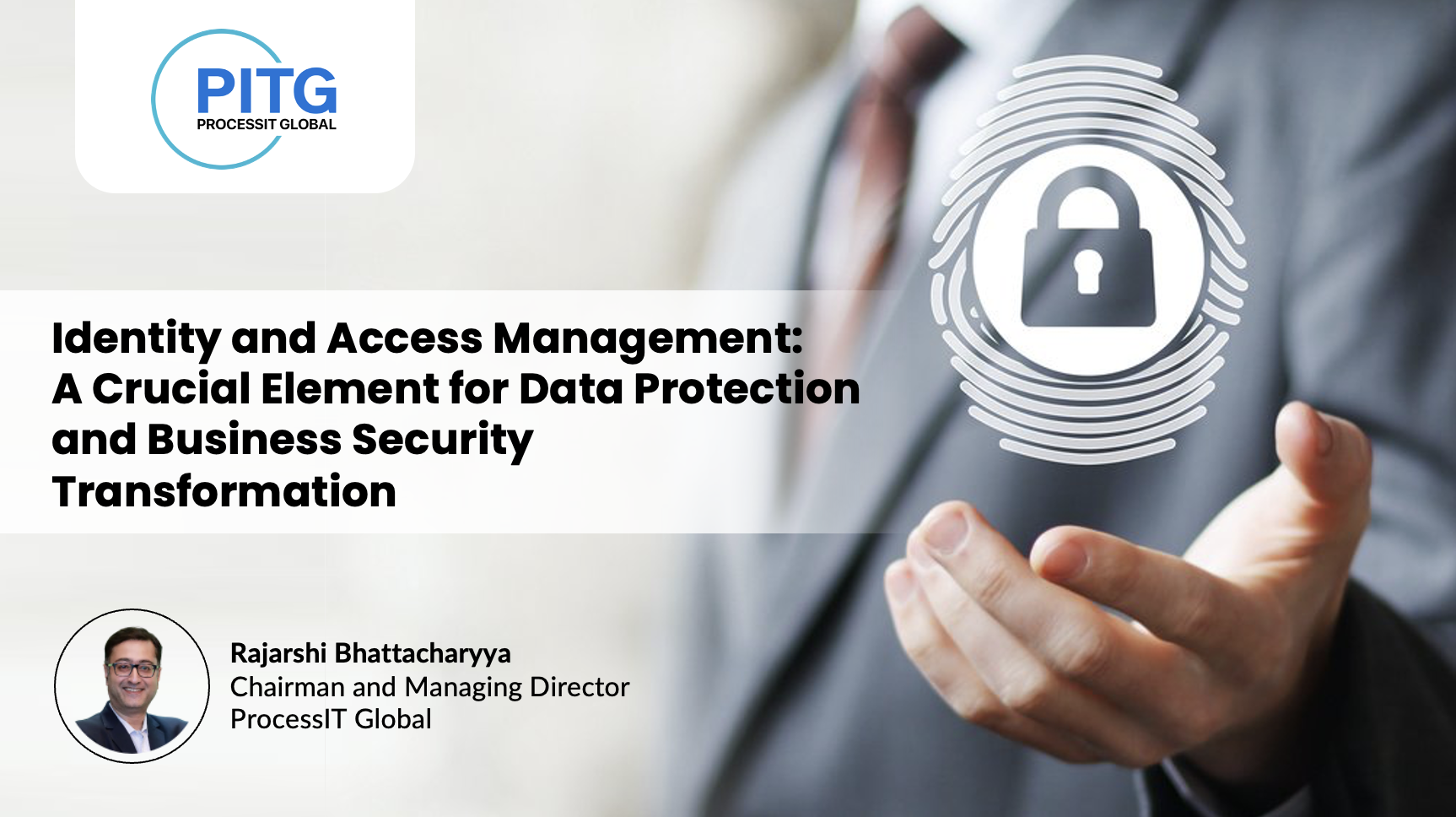Identity and Access Management: A Crucial Element for Data Protection and Business Security Transformation - Rajarshi Bhattacharyya, Co-Founder, Chairman and Managing Director, ProcessIT Global

Long after the lockdowns, organizations worldwide continue
to embrace remote working and BYOD policies. Additionally, integrating IoT
devices across various industries, ongoing technological advancements, and
global business expansion further complicate the IT landscape. To enhance user
experience and manage identities efficiently across multiple platforms,
organizations require secure access to digital assets for a diverse user base
across both on-prem and cloud applications. Any lapse in managing user credentials
can lead to data breaches. Identity and Access Management (IAM) solutions
address these challenges by organizing user identities and access controls,
which is imperative for data protection.
IAM is crucial in managing and protecting data within complex IT environments. It is essential for storing and transferring data to manage customers and employees. According to a recent report by Markets and Markets, the global IAM market is projected to grow from USD 22.9 billion in 2024 to USD 34.3 billion by 2029, at a CAGR of 8.4%.
Understanding IAM
IAM includes a set of policies, processes, and technologies designed to manage digital identities and control access to organizational resources, ensuring appropriate access assignment. Key components of IAM are authentication, authorization, identity management, and access management. Additionally, by implementing automation, IAM solutions significantly enhance the productivity of IT teams.
IAM and Data
Protection
Data has become the lifeblood of organizations, driving
decision-making in finance, operations, marketing, sales, supply chain, and
product development. As a result, securing this data is a top priority,
requiring measures to ensure data confidentiality, integrity, and availability
(CIA). IAM protects data from unauthorized access by implementing features such
as Single Sign-On (SSO), Multi-Factor Authentication (MFA), Identity Governance
and Administration (IGA), Encryption, Identity as a Service (IDaaS), and
Privileged Access Management (PAM).
Provides Secure Access
By implementing SSO and MFA, IAM significantly reduces the
risk of compromised user credentials, as users are not required to remember
multiple passwords. Moreover, features like one-time passwords (OTP) and
security questions further minimize the chances of malicious actors gaining
access to critical resources. IAM also offers comprehensive logging and
auditing capabilities, enabling organizations to monitor and track access
activities effectively.
Prevents Transmission of Sensitive Data
Implementing IAM solutions allows organizations to set
strict permissions, restricting users from changing, creating, or transmitting
sensitive data without proper authorization. The first step in safeguarding
sensitive data is to identify and classify it accurately. Once classified,
roles and permissions can be assigned to control access, and the data should be
encrypted to ensure its security. Additionally, by adhering to the principle of
least privilege—granting users only the access necessary to perform their
tasks—IAM minimizes potential damage from compromised accounts and enhances
data protection.
Improves Regulatory Compliance
IAM systems are instrumental in helping organizations meet compliance mandates related to data security by providing essential controls and documentation. Regulatory frameworks generally have stringent requirements for data protection and access management, IAM solutions facilitate compliance by implementing access controls, ensuring data encryption, ensuring user provisioning and de-provisioning, and providing compliance reporting.
IAM and Business
Security Transformation
In addition to protecting data, IAM plays a crucial role
in transforming the overall security posture of businesses in several key ways.
Enhances User Experience
IAM solutions empower end-users by enabling secure access
to organizational systems from anywhere, at any time, and on any device. This flexibility is very crucial in today’s
mobile and remote work environments.
With SSO, users can access multiple applications with a single set of
credentials. This simplifies the login
process and significantly diminishes password fatigue. As a result, employee productivity and user
satisfaction are greatly enhanced.
Whether accessing on-prem applications, mobile apps, or cloud services,
users can have a streamlined and efficient interaction with organizational
resources through IAM systems. These solutions enhance the overall security and
operational effectiveness of businesses.
Reduces Costs
IAM solutions are highly effective in saving
administrative costs and user time by eliminating access-related issues. By
automating access procedures, IAM reduces overhead costs and streamlines
operations. The enhanced security provided by IAM helps prevent data breaches,
thereby protecting the organization's reputation and reducing customer churn.
Furthermore, Identity as a Service (IDaaS), a cloud-based
IAM solution, eliminates the need for capital investment in hardware and
simplifies IT operations. This allows IT teams to focus on core business
initiatives rather than managing complex access controls. By leveraging IAM,
organizations can achieve significant cost savings and operational
efficiencies, while enhancing their overall security posture.
Mitigates Insider Threats: Insider threats, whether due to
negligence or malicious intent, are often difficult to detect and can take a
long time to uncover. IAM platforms enhance security by providing detailed
visibility into who is accessing what data, how they are accessing it, and from
where. These platforms enforce access based on predefined policies and offer
real-time monitoring and dynamic adjustments, eliminating the need for manual
updates by the IT team. By automating and closely monitoring access controls,
IAM solutions significantly mitigate the risk of insider threats.
In today’s age of increasingly sophisticated data breaches
and cyber threats, IAM is a critical component of any organization’s robust
security strategy. By ensuring secure access, supporting regulatory compliance,
and enhancing overall security posture, IAM is an absolute necessity for
protecting data and enabling business security transformation. Organizations
that prioritize IAM are better equipped to protect their assets, enhance
operational efficiency, and retain trust with customers and other stakeholders.



